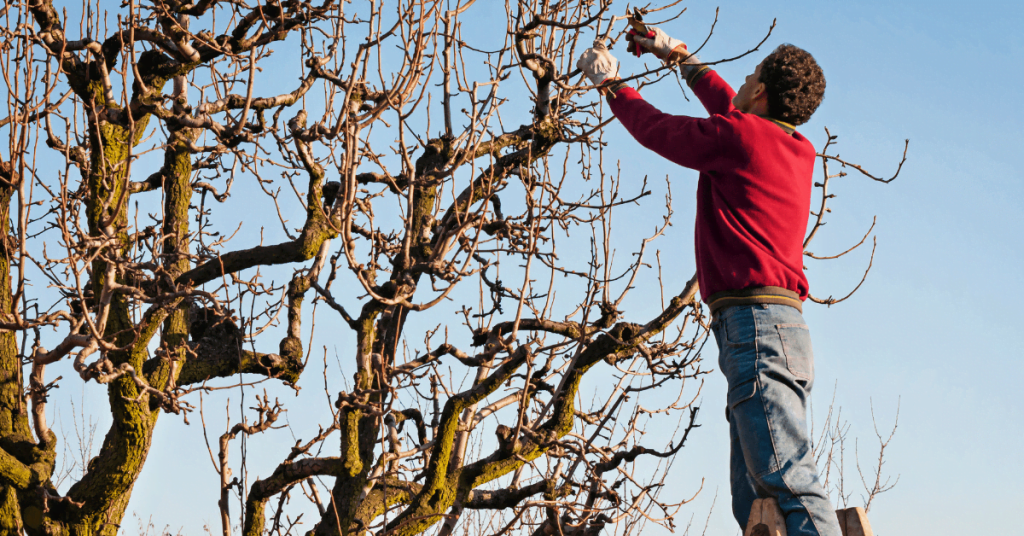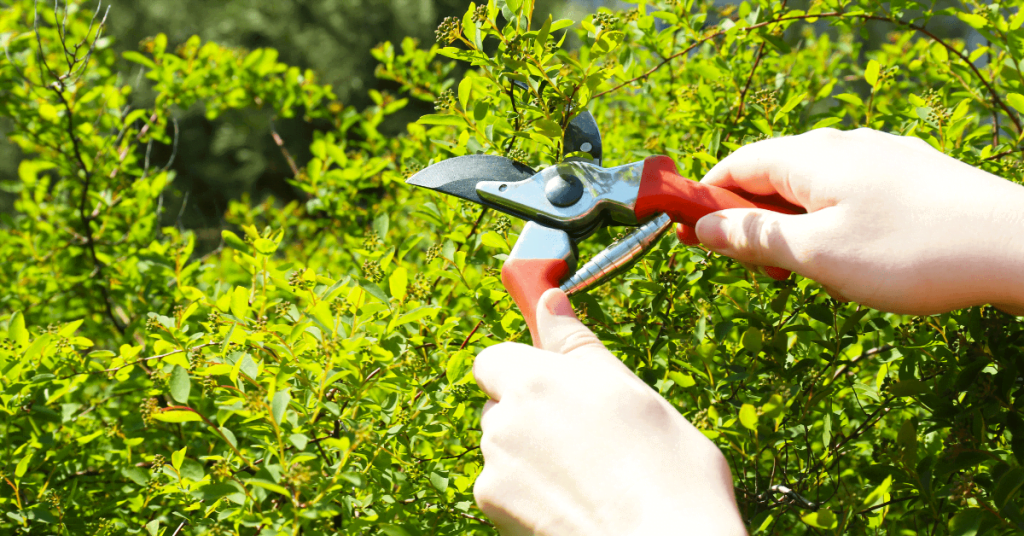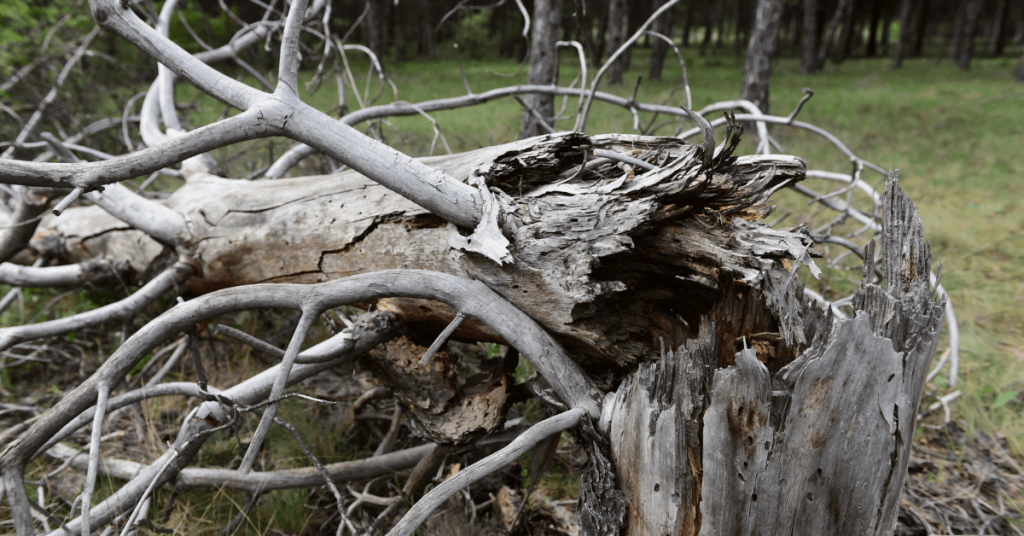Growing a tree taller may seem impossible, but pruning can be an effective way to increase its height. Pruning helps you maintain the health of the tree and encourages it to grow more desirably, ensuring that it grows not only tall but also stays healthy. But how do you know when and where to prune your trees?
In this blog post, we’ll discuss how to prune a tree properly and why it’s important. Read on for useful tips on properly pruning your tree so it reaches its maximum potential height!
What is pruning and why do it?
Pruning is the process of trimming away dead or excess branches and foliage from plants, trees and shrubs. This helps to promote healthier growth and improve the shape and structure of a tree. Pruning is an important part of tree care and maintenance.
Proper pruning can promote healthy, vigorous growth, increase flowering and fruiting, improve the tree’s overall appearance, reduce the potential for storm damage and help prevent hazards such as broken branches or dropped fruit.
Pruning should be done regularly throughout the year as needed, not just in winter when most people think of it. Pruning can be done with hand tools such as shears, loppers and saws or motorized tools such as hedge trimmers and chainsaws.
How to prune a tree to grow taller?
When pruning your tree for height, it is important to ensure that you are not removing too much at once. Aim to remove no more than one-third of the tree’s branches during a single pruning session.
- Start by assessing your tree’s overall health and structure. Make sure the tree looks healthy and there are no signs of dead or rotting branches.
- Identify the trunk and main branches of the tree. These will be the points from which you can begin to selectively prune, so make sure they are healthy and clear of any dead wood.
- Selectively prune away the side branches that are growing inwards or downwards. Do not remove more than one-third of the tree’s foliage at a time, as this can lead to shock and weakened growth.
- Cut off any branches that are crossing each other or rubbing against each other. These branches can cause damage and are best removed to promote healthy growth.
- Selectively prune away any twigs or shoots that are growing from the trunk of the tree. These can be cut back with sharp shears to encourage a more upright growth pattern.
- Once you have finished selectively pruning your tree, use a hose to spray off any remaining debris. This will help reduce the risk of disease and pest infestation.
- Provide regular care and maintenance for your tree including providing adequate water and fertilizer, mulching the soil around the base of the tree and pruning away dead or diseased branches as needed.
How to prune a tree for height growth?
Pruning trees for height growth is a task that can be done in several different ways, depending on the species of tree you are working with.
- For deciduous trees, early summer pruning is best, as this will allow the tree to adjust to any changes and still have time to grow before dormancy sets in.
- Start by removing any weak, damaged or diseased branches with a pruning saw.
- Then, remove any crossing branches that may be damaging the tree’s bark and redirect energy away from growth.
- It is also important to thin out competing leaders so the remaining leader can grow tall and straight without competition.
- Finally, shorten the remaining lateral branches to just above a bud. This will encourage the tree’s energy to be directed into growing from these buds instead of outward.
- For coniferous trees, winter is the best time for pruning as this allows the tree to respond with increased growth in the spring and summer months.
When to prune a tree for height growth?
It is best to prune a tree for height growth when it is still young and actively growing. This period is called the “juvenile” phase, which generally occurs until the tree reaches about 20 feet in height. Pruning during this stage encourages new upright branches to grow, which will help the tree reach its desired height.
The best time to prune a tree for height growth is in late winter or early spring. This is the time when the tree has not yet begun its growing season, so it won’t be as stressed by being cut back.
However, it’s important to note that this is not the only time for pruning and each tree species will require different pruning times. When in doubt, consult an arborist or professional landscaper for advice on pruning your particular tree species for optimal height growth.
Common mistakes people make when trying to prune a tree for height growth?
- Pruning too much
Too much pruning can act after growth, leaving it weak and vulnerable to disease. It’s best to only remove dead branches and leave the rest of the canopy intact.
- Pruning at the wrong time
The best time to prune is during the tree’s dormant season. This is typical during late winter or early spring before new growth begins. Pruning at any other time of the year could leave the tree vulnerable to disease and insect infestation.
- Pruning too close to the trunk
When pruning, it’s important to not cut too close to the trunk as this can damage the bark and leave vulnerable spots for insects or diseases to get in. It’s best to make most pruning cuts at least one foot away from the trunk.
- Pruning into a single leader
Trees that are pruned into a single leader often end up with a weak, misshapen trunk due to too much weight on a single branch. Instead, it’s better to let the tree grow naturally and simply prune away any dead or diseased branches.
- Pruning without proper tools
Using the wrong tools when pruning can result in an uneven cut that leaves the tree at risk of infection. Investing in quality pruning tools is essential to ensuring a successful pruning job.
How often should you prune a tree for height growth?
It depends on the type of tree, but generally speaking, pruning should be done at least once yearly. Trees that grow quickly and require significant height growth, such as fruit trees or ornamental trees.
This will encourage new growth and help the tree reach its desired height. Pruning should be done in late winter or early spring when the tree is dormant. This will ensure that the pruned branches are not growing back during the active season. Care should be taken to avoid over-pruning, as it can stunt growth and reduce fruiting potential.
FAQs – Prune Tree To Grow Taller
Do trees grow faster if you trim them?
No, trimming a tree does not typically cause it to grow faster. Depending on the species of tree and the way you prune it, pruning may reduce a tree’s growth or even damage its health.
Pruning is typically only done to improve a tree’s structure and eliminate dead or diseased branches that could cause damage. Trees naturally grow in a certain shape and pruning can help them maintain that shape. So while trimming a tree won’t typically make it grow any faster, it can help keep it in good health.
Can you trim the height of a tree?
Yes, it is possible to trim the height of a tree. Depending on the species and size of the tree, it can be done through pruning and topping. Pruning involves removing large branches from the top of the tree to reduce its overall height.
Topping involves cutting off the tops of trees to create an even-looking canopy or to reduce the overall height. Both of these methods should be done carefully to ensure that the tree remains healthy and structurally sound.
What happens if you cut all the branches off a tree?
Cutting off all the branches of a tree can be harmful to the tree and may even kill it. If there are no branches left, the tree will have difficulty photosynthesizing, as this process requires sunlight that is blocked by leaves on the branches.
Without its leaves, the tree is unable to produce energy or food for itself and it will be unable to absorb the necessary nutrients, water and minerals from the soil. Additionally, cutting off all the branches can make a tree structurally unstable, which could cause it to topple over in strong winds or heavy rain.
Consequence
If you want to grow a taller tree, pruning is essential. You should remove any branches that are growing vertically and cut back the ones that are growing horizontally. This will encourage the tree to put all its energy into growing upwards, resulting in a taller tree.
Remember to always use sharp tools when pruning and be careful not to damage the bark. With these tips, you can successfully prune your way to a taller tree!



